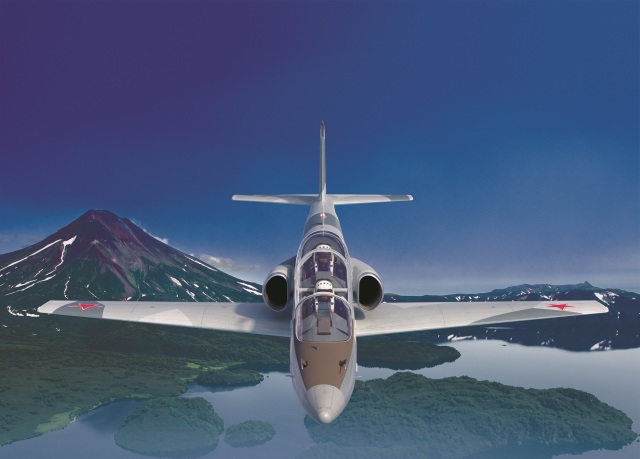In the last days of last year, the United Aircraft Corporation (UAC, part of the Rostec State Corporation) reported that the Mikoyan Design Bureau, as part of the UAC, is creating a new training complex for pilots, based on the MiG-TCB single-engine jet aircraft. TASS — about the main models of training aircraft and the new development of Russian aircraft designers
Almost fighters
A message on the UAC website notes that L-39 jet aircraft are used in Russia for basic pilot training. The machine was developed in Czechoslovakia in the 1960s. In 1972, the machine was chosen as the main training aircraft of the Warsaw Pact member countries, starting to replace the previously used L-29. According to the Ministry of Defense of the Russian Federation, a two-seater aircraft with a maximum take-off weight of 5.6 tons and a wingspan of 9.5 m has a cruising speed of 750 km / h. The L-39 can act as a light attack aircraft. In this case, a container with a 23 mm cannon can be suspended under the fuselage, and unguided bombs or rockets can be placed under the wings.
In November 2023, the L-39 was included in the reports of the Ministry of Defense of the Russian Federation on the destroyed equipment of the Armed Forces of Ukraine: one such machine was shot down by fighter aircraft of the Russian Aerospace Forces or air defense means. According to information from open sources, Kiev has upgraded several Czechoslovak aircraft and transferred them to its air force under the name L-39M1.
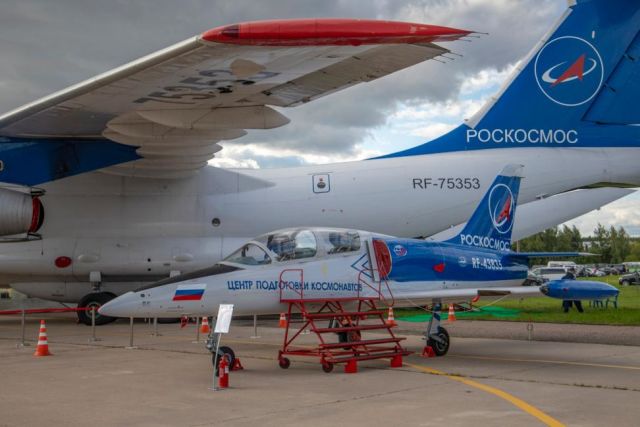 |
| The L-39 training aircraft. |
| Source: © Viktor Bodrov/ TASS |
Honored Military Pilot of the Russian Federation, Candidate of Technical Sciences, Major General Vladimir Popov, in an interview with TASS, shared his opinion that foreign machines were used in the Soviet Union for political reasons. "Our school was very good: both the design idea and the entire aviation industry were at the level of world standards, but it was necessary to assist our partners from the socialist countries under the Warsaw Pact or the Council of Mutual Economic Assistance," the expert said, noting that Soviet designers had developed domestic piston and jet training aircraft that were superior according to the characteristics, they are foreign.
Yak-30: lost by winning
An example of a failed mass domestic jet aircraft of initial training can be the Yak-30, which took to the air in 1960. According to the reference book "The History of aircraft designs in the USSR 1951-1965", the all-metal two-seat low-wing with retractable landing gear was distinguished by a simple and reliable design. At the same time, the on-board electronic equipment was approaching fighter planes according to a set of instruments, ensuring flight in difficult weather conditions and at night. In the competition for the right to become a standard training aircraft of the Warsaw Pact Air Forces, the Yak-30 competed with the Czechoslovakian L-29 Dolphin and the Polish TS-11 Iskra. The Soviet machine was significantly superior to its competitors in all flight characteristics. With equal thrust, the L-29 was 40% heavier than the Yak-30, and the Pole was even heavier. In addition, the development of the Yakovlev Design Bureau was much more fuel-efficient thanks to the new successful RU19-300 engine and 2-2.5 times cheaper in production. The aircraft has successfully passed state tests, set official world speed and altitude records in its category of light vehicles. Nevertheless, the Soviet leadership supported the Czechoslovak aviation industry and decided to purchase a Dolphin for training Soviet cadets.
In the 1990s, the Yakovlev Experimental Design Bureau (now part of PJSC Irkut Scientific and Production Corporation UAC) developed a two-seat combat training aircraft (UBS) Yak-130 to replace the L—39. The car was the first in Russia to have a "glass cabin": many analog devices were replaced by large multifunction displays. The Yak-130 is equipped with an integrated digital electrical control system. That is, the pilot, moving the control knob, only transmits commands to the on-board computers, and they process them and control the rudders of the aircraft. This principle allows you to reconfigure the control system, allowing you to simulate the behavior in the air and combat operation of various machines. If the cadet does not cope with piloting, and the instructor for various reasons will not be able to come to his aid, the Yak-130 can land under the control of a ground operator.
The maximum take—off weight of the aircraft exceeds 10 tons (for comparison, the MiG-35 light class fighter is more than twice as heavy), it is capable of accelerating to 1,060 km / h, remaining subsonic, and can fly up to 2,100 km with outboard fuel tanks. The aircraft was exported to Algeria, Bangladesh, Belarus, Vietnam, Myanmar and Laos. In autumn, the Yak-130 entered service with the Iranian Air Force.
Separated twins
The development of the Yak-130 began after the announcement of a state competition in the early 1990s. However, at that difficult time for the country, funding for the development of a training vehicle from the Ministry of Defense soon almost stopped. Therefore, it was decided to involve the Italian company Aermacchi (now part of the Leonardo concern) as a partner. The Italian side withdrew from the project in 1999, having received technical documentation for the aircraft, and later released its "twin" of the Russian vehicle, the M-346 TCB. Yakovlev Design Bureau initially created its aircraft as a combat training aircraft capable of carrying up to 3 tons of combat load (unguided and guided missiles and bombs, a container with a cannon). The Italians designed the M-346 as a training aircraft, having only recently introduced its combat version, the M-346FA. The official website of the manufacturer reports that in addition to Italy, Singapore, Israel, Poland, Qatar and Greece became buyers of the training version.
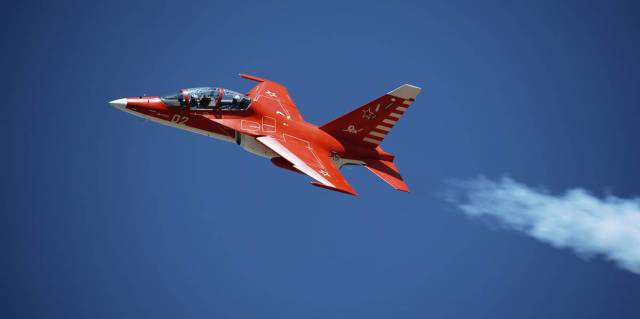 |
| The Yak-130 combat training aircraft. |
| Source: © Ladislav Karpov/TASS |
In parallel with the Yak-130, the Mikoyan Design Bureau created its own version of the advanced training aircraft, the MiG-AT . The car was built in cooperation with the French companies Snecma and Turbomeca, who were responsible for the power plant, Sextant Avionique, which developed avionics, Thomson-CSF (radio navigation equipment) and a number of others. French partners also helped to promote the project on the international market. However, the aircraft did not go into mass production. In 2018, General Designer — Vice President of the UAC Sergey Korotkov reported that the MiG-AT could begin to be supplied to the Ministry of Defense of the Russian Federation.
Simple, inexpensive, modern
In her message on the UAC website, she called the basic training of pilots a serious and long stage, which shows what type of aviation a future specialist is suitable for. Training aircraft (TCB) used by cadets of flight schools must perform aerobatics with high overloads.
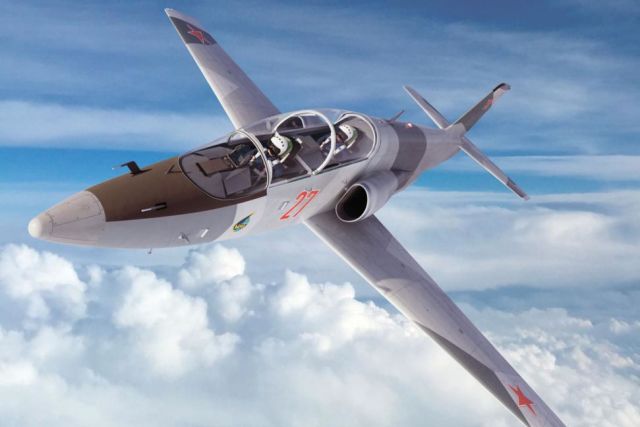 |
| The MiG-TCB training aircraft. |
| Source: © UAC Press Service |
"We are creating the cheapest, easiest to operate — both in piloting and in maintenance — a single—engine aircraft that fully meets the requirements for the basic training stage," UAC quotes the words of Deputy Managing Director of the OKB of Operational and Tactical Aviation, Director of the Mikoyan Design Bureau, chief designer of the OKB Andrey Nedosekin.
The future characteristics of the MiG-TCB are given in the corporate magazine Horizons of PJSC UAC. The length of the aircraft will be 11.6 m, the wingspan is almost 11 m, the weight of the empty aircraft is 3.5 tons, the flight range is 1,300 km. The new machine will be able to withstand an eight-fold positive overload and a three-fold negative overload, which is comparable to the permissible overloads of the L-39. But the assigned flight life will be almost twice as high as that of the Czechoslovak "veteran": 8,750 hours.
The new aircraft will be able to carry up to 1 ton of payload. It can be an outboard fuel tank or an armament. "In general, we believe that the basic training aircraft can do without suspensions of real weapons in the basic course, and if necessary, we are ready to simulate aiming modes — modern computing tools allow this," the magazine quotes Alexey Shukailo, chief designer of the MiG—TCB training complex. "Our Design Bureau has extensive experience in implementing training regimes."
The aircraft is being developed using existing groundwork. In particular, the cabin of the new car is designed based on the cabin of the MiG-AT. The information will be displayed on modern multifunctional indicators with a diagonal of 15 inches. In the rear cabin, where the instructor will be located, it is planned to place equipment to simulate training situations — for example, failures.
Flame engine
The designers of the MiG-TCB opted for the AI-222-25 dual-circuit turbojet engine, a pair of which is used on the Russian Yak-130 combat training aircraft. Serial production of the engine has been mastered at the Salyut production complex of the United Engine Corporation (UEC, part of Rostec).
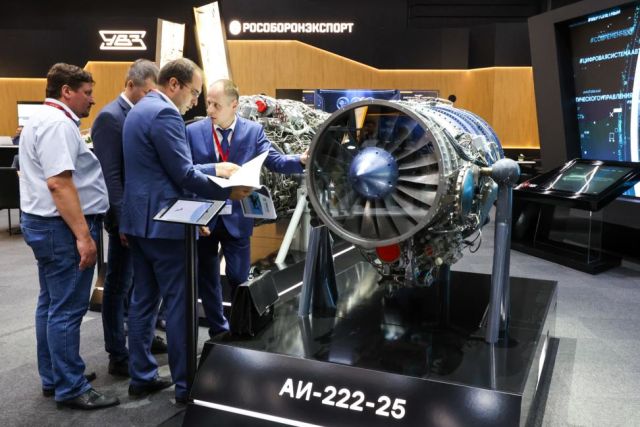 |
| Dual-circuit turbojet engine AI-222-25. |
| Source: Vladimir Gerdo/ TASS |
Honored Military Pilot of the Russian Federation, Candidate of Technical Sciences, Major General Vladimir Popov, in an interview with TASS, shared his opinion that twin-engine aircraft are considered difficult for initial training. According to him, the two engine control knobs require precise regulation so that the revolutions of both engines are the same, otherwise there will be a difference in their thrust, the aircraft will tend to turn around. In a single-engine aircraft, engine control is easier. "You brought out some revolutions, set the mode, and you don't need to adjust it relative to another engine," Popov said, noting that the number of engines affects flight safety. "[If] one engine, conditionally, failed, then on the second engine, as a rule, we pull the pilot," the expert explained.
"We understand that the aircraft is equipped with one engine. And no matter how good it is, the practice of the same L‑39 and other aircraft shows that the engine sometimes stops in the air," Alexey Shukailo quotes the corporate magazine of the UAC. — When the engine fails, the generators stand up. But due to the fact that we expect to use new batteries, the flight time of the aircraft without an electric power source in the form of a generator, only on batteries, will reach 50 minutes or an hour."
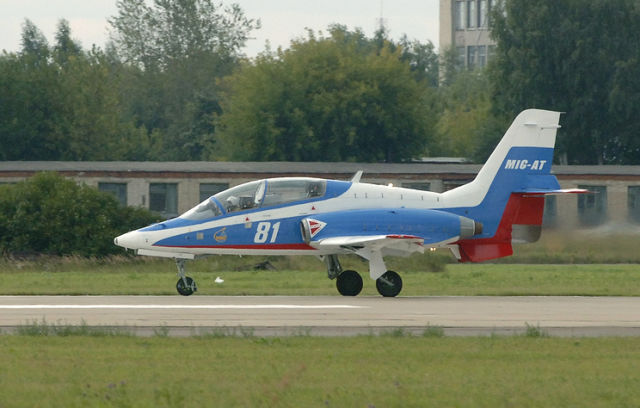 |
| MiG-AT. |
| Source: © Grigory Sysoev/TASS |
The MiG-AT was designed to be twin-engine, and the deputy general director of the Yakovlev Design Bureau for flight tests, Hero of Russia Roman Taskaev, in an interview with TASS, said that French-made Larzak turbojet engines were installed on the aircraft. The use of domestic engines was also considered — RD-1700 of the V.V. Chernyshev Moscow Machine-Building Enterprise and AL-55, created at the Rybinsk Saturn (both enterprises are part of the UEC). The main customer, the Ministry of Defense of the Russian Federation, insisted on using Russian engines. However, before the closure of the test program, the MiG-AT managed to make only a few flights with the Russian power plant.
As expected, the MiG-TCB will significantly surpass the honored veteran of the L-39 in flight characteristics and the AI-222-25 engine will make a great contribution to this.
"The thrust of the engine on the ground in combat mode is 2.5 tons, which is significantly more than on the L‑39," Horizon quotes Alexander Shipanov, Deputy General Designer of the Salyut PC. — In addition, the modified engine will have an additional mode with a thrust of 2,300 kg, which will increase its service life. Even this thrust is enough to perform all the aerobatics and solve all the tasks facing the TCB."
Victor Bodrov
